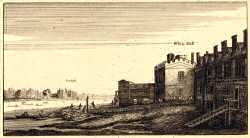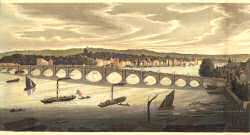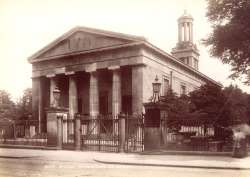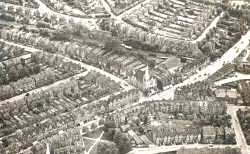London Borough of Lambeth
The London Borough of Lambeth stretches in a long thin line from the Thames to the Surrey hills. The boundaries of the manor and the parish of Lambeth are largely the same as the present borough but with the addition of the old parishes of Streatham and Clapham.
The manor of Lambeth belonged to the Archbishop of Canterbury from 1190. Lambeth Palace sat opposite the Palace of Westminster and the two were linked by a horse ferry across the Thames.
The name Lambeth is thought to have come from the Old English "lamb" and "hythe", suggesting a landing place for lambs or sheep.
 Until the middle of the 18th century the north was marshland, crossed by a few roads raised against floods. The south was dominated by woods and commons with a few villages and settlements, notably at Clapham and Streatham on the old Roman roads to the south coast.
Until the middle of the 18th century the north was marshland, crossed by a few roads raised against floods. The south was dominated by woods and commons with a few villages and settlements, notably at Clapham and Streatham on the old Roman roads to the south coast.
Industry was concentrated in the north along the riverside. Lambeth was famous for glassmaking, pottery and boat building.
Westminster Bridge was opened in 1750 and marked the beginning of any major development in Lambeth. The new bridges (Blackfriars and Vauxhall followed) gave people a chance to escape the noises and smells of the city.
The laying out of major thoroughfares such as Westminster Bridge Road, Kennington Road and Camberwell New Road generated ribbon development of houses and shops. Many of these imposing terraces can still be seen.
 The next catalyst to development was the coming of the railways in the mid 19th century. The parish church of St Mary at Lambeth, on the northern-most tip of Lambeth, could no longer cope and four new churches were built in the 1820s: St Mark's in Kennington; St John's, Waterloo; St Luke's in Norwood and St Matthew's, Brixton.
The next catalyst to development was the coming of the railways in the mid 19th century. The parish church of St Mary at Lambeth, on the northern-most tip of Lambeth, could no longer cope and four new churches were built in the 1820s: St Mark's in Kennington; St John's, Waterloo; St Luke's in Norwood and St Matthew's, Brixton.
Suburban expansion was beginning in the south. Brixton, Herne Hill, Clapham, Streatham and Norwood had railway stations and became attractive propositions for the lower middle classes who worked in the City and the West End. In Norwood the population grew in 50 years from 600 to 6000.
In 1900 the Metropolitan Borough of Lambeth was formed. (Streatham and Clapham were in the Metropolitan Borough of Wandsworth). Building and development continued steadily and by the 1930 even leafy Streatham was a thriving suburb, gaining its reputation as an entertain ment centre.
ment centre.
Slum clearance and the war meant massive programmes of public housing, often fiercely resisted in the south. The policy of demolishing large 19th century properties and replacing them with modern estates continued into the 1970s.
In 1965 the old parishes of Lambeth, Streatham and Clapham were combined to make the London Borough of Lambeth. As it is today, Lambeth has always been a borough of contrasts. Each district has its own identity and loyalties. Lambeth has developed into a multi cultural inner city borough of great interest.



